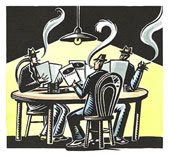 I am sure that you have read various references online and in other news media where derivatives have been referred to as financial WMDs (Weapons of Mass Destruction). I think the term was originally coined by none other than Warren Buffett.
I am sure that you have read various references online and in other news media where derivatives have been referred to as financial WMDs (Weapons of Mass Destruction). I think the term was originally coined by none other than Warren Buffett.
To find out more about it, and to get some inside scoop as to the goings on in that area, I just finished reading Satyajit Das’ fascinating book “Traders, Guns and Money.”
The author is an international expert in the dazzling world of financial derivatives and has 25 years experience in the financial markets. He has had a foot on both sides of the derivatives equation, having worked for banks (the “sell side”) such as the Commonwealth Bank of Australia, Citicorp Investment Bank and Merrill Lynch and, as Treasurer of the TNT Group, for clients (the “buy side”). He now acts as a consultant advising banks and corporations and presenting seminars throughout the world on the slippery subject of derivatives.
Derivatives for the most part are unknown unknowns. Here’s an example and a humorous explanation of that term for anybody, especially women, to understand:
In most businesses, the nature of the product is a known known. We do not spend a lot of time debating the use of or our need for a pair of shoes. We also understand our choices—lace up or slip-on, black or brown. I speak, of course, of men’s shoes here.
Women’s shoes, well, they are closer to derivatives. The derivatives sales process is more complex. You may not know that you need the product—an unknown known. You probably haven’t got the faintest idea of what a double knockout currency option with rebate is or does—a known unknown. What should you pay for this particular item? Definitely, unknown unknown. Derivatives are similar to a Manolo Blahnik or Jimmy Choo pair of women’s shoes.
This book is a sensational and controversial account of the often dazzling business of derivatives trading. No money is ever really made in financial markets. Markets merely transfer wealth. As to how to make money? Well, it is basically theft, misrepresentation, lies, cheating, deception or force.
It is impossible to make the staggering amounts made in derivatives in good years honestly.
The book is a wry and wickedly comic expose of the culture, games, and pure deceptions played out every day in trading rooms around the world, usually with other people’s money. Even though you do not need to follow every derivative example shown, it’s a fascinating read guaranteed to make you think.
